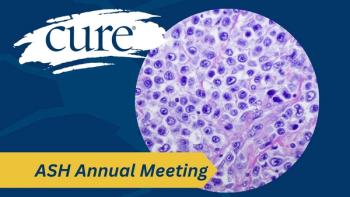
Tislelizumab Has Comparable Outcomes to Nexavar in Liver Cancer Subset
Tislelizumab demonstrated similar overall survival and safety in unresectable hepatocellular carcinoma compared with Nexavar, research found.
The overall survival for patients with unresectable hepatocellular carcinoma (HCC), a subset of liver cancer, was no worse in patients receiving a novel drug, tislelizumab, than it was for those receiving Nexavar (sorafenib), according to a recent study published in JAMA Oncology.
According to the National Cancer Institute, tislelizumab is a type of monoclonal antibody that binds to the protein, PD-1, which prevents the protein from binding to proteins PD-L1 and PD-L2.
Nexavar is a type of tyrosine kinase inhibitor (TKI) that blocks the specific proteins cancer cells need in order to grow and divide, the National Cancer Institute stated. This drug “may also prevent the growth of new blood vessels that tumors need to grow.”
HCC is considered the most common form of primary liver cancer, according to the Mayo Clinic, and occurs more often in patients with chronic liver diseases, such as cirrhosis, that are caused by hepatitis B or hepatitis C infection. Unresectable refers to the inability to surgically remove the cancer.
The study, which analyzed the phase 3 RATIONALE-301 clinical trial, included 674 patients with unresectable HCC and occurred between Dec. 27, 2017 and Oct. 2, 2019. Of the 674 included patients, 570 were men and 104 were women.
Two treatment groups were identified in the study, in which the patients were randomly assigned to either the tislelizumap group (342 patients) or the Nexavar group (332 patients).
The study authors noted that “patient demographics were generally well-balanced between treatment arms; however, there were some numerical differences in baseline disease characteristics with a higher proportion of patients in the tislelizumab arm having advanced disease and more likely to have risk factors for HCC.”
Within the study, the authors examined their primary endpoint (main result measured at the end of a study to see if treatment worked), which was overall survival (OS; length of time from diagnosis or the start of treatment when a patient remains alive). The median OS was 15.9 months in the tislelizumab group versus 14.1 months in the Nexavar group, though the difference between these outcomes were not statistically significant, meaning that the researchers could not definitely say that one drug is better than the other.
Regarding the safety and tolerability from the trial, the study authors noted that 662 patients were included in the safety analysis, which included 338 patients from the tislelizumab group and 324 patients from the Nexavar group.
The authors defined treatment-emergent side effects as “any (side effect) with a date of onset or date of worsening in severity from baseline occurring on or after the first dose of study drug.” Treatment-related side effects, according to a study published on PubMed Central, are considered “an unfavorable change in the health of a participant in clinical trials.”
Researchers from the JAMA Oncology study found that the treatment-emergent side effects were similar between the two treatment groups. Patients who experienced grade 3 or higher treatment-emergent side effects included 163 patients from the tislelizumab group and 212 in the Nexavar group.
In terms of treatment-related side effects, 259 patients from the tislelizumab and 311 patients from the Nexavar groups experienced treatment-related side effects of any grade. There were 75 and 173 patients who experienced grade 3 or higher treatment-related side effects from the tislelizumab and Nexavar groups, respectively.
According to the study, the most common treatment-related side effects after receiving tislelizumab included an increased amount of aspartate aminotransferase and alanine aminotransferase (two types of enzymes mainly found in the liver), and blood bilirubin (a yellow pigment that produces when red blood cells break down).
After receiving treatment of Nexavar, the authors found that the common treatment-related side effects included hand-foot syndrome (palmar-plantar erythrodysesthesia syndrome; redness, swelling and blistering of palms of hands and soles of feet), increased amounts of aspartate aminotransferase and diarrhea.
Treatment-emergent side effects leading to deaths, the authors noted, occurred in 15 patients from the tislelizumab group and 17 patients in the Nexavar group. They also determined that treatment-related side effects led to three deaths in the tislelizumab group and two deaths in the Nexavar group.
“Tislelizumab demonstrated favorable safety compared with (Nexavar), indicating its potential suitability for patients who cannot tolerate TKI treatment,” the study authors wrote. “The most common (treatment-emergent side effects) were driven by toxic effects of tislelizumab and (Nexavar).”
For more news on cancer updates, research and education, don’t forget to





